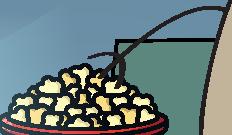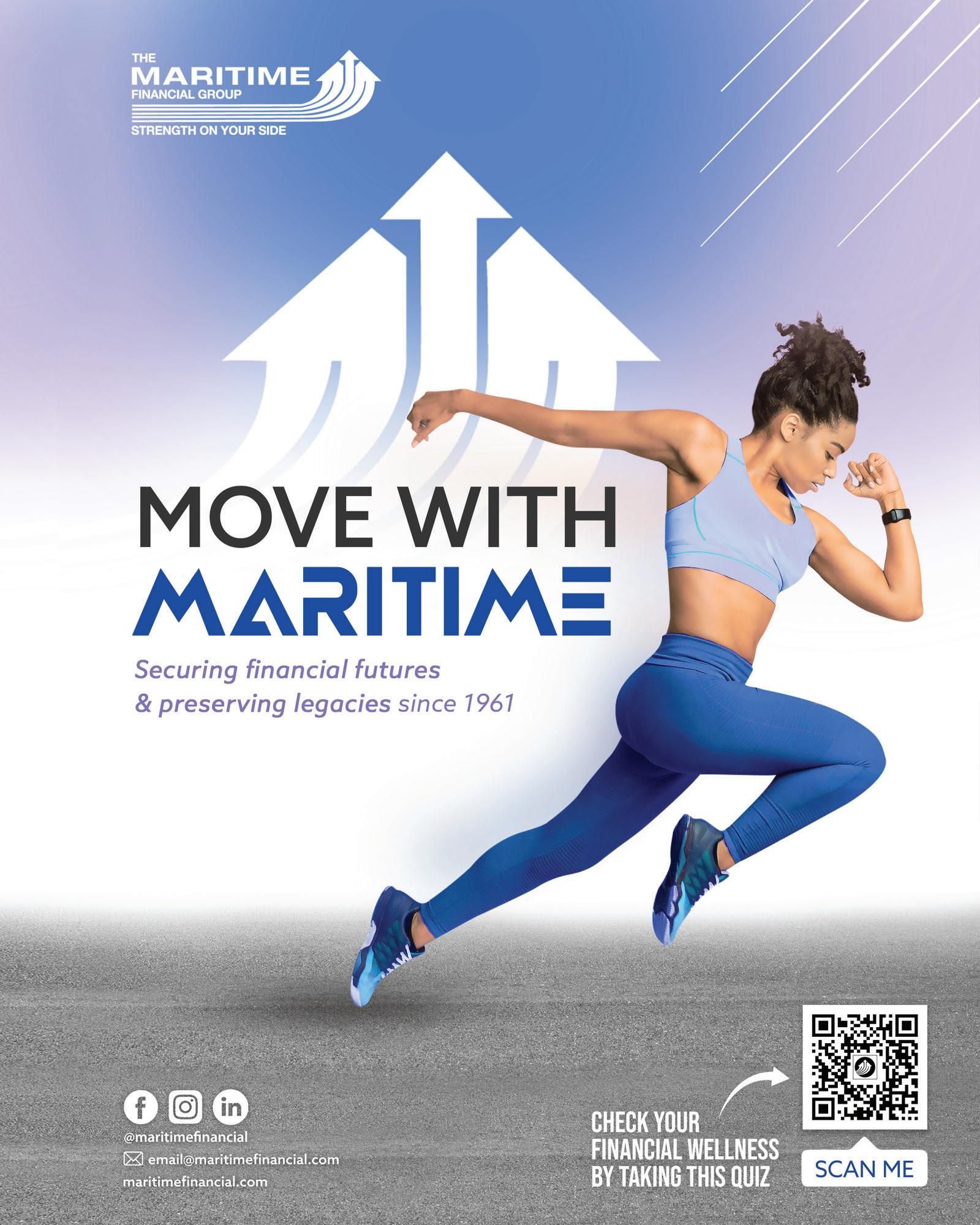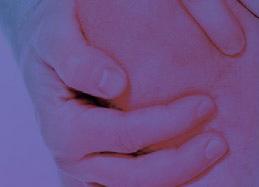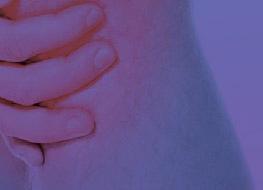HEY THERE, COUCH POTATO!

HOW







PARENTS’ GUIDE TO ADHD LEARN HOW TO HELP YOUR KIDS COPE WITH ATTENTION-DEFICIT HYPERACTIVITY DISORDER.

THE IMMUNE SYSTEM ONE OF THE MOST IMPORTANT SYSTEMS FOR OUR BODY’S PROTECTION.


THE SCIENCE OF INTERNAL MONOLOGUE HOW TALKING TO OURSELVES CAN BE USEFUL TO US.


APR - JUN 2023 ISSUE 46
A SEDENTARY LIFESTYLE IMPACTS OUR HEALTH. EDENTARY



Founders
Sherine Mungal
Stuart Fraser
ATNICHOJEN WE ENVISION, INNOVATE, DELIVER,AND INSPIRE!
With over 30 years of experience, we offer a range of electrical installation services, energy conservation solutions, smart home system designs, and consulting services for all your electrical needs.
In alignment with our culture of sustainability and over a decade of expertise in renewable energy, we provide consulting for solar, wind turbine, hydropower, and hybrid system designs.
Schedule your consultation today, and stay tuned for the launch of our GREEN GADGETS line of products!

Editor-in-Chief
Medical Advisory Writers
Amira Chenelle Mungal
Dr. Richard Lutchman
Amira Chenelle Mungal
Alyssa Subero
Brandon Pereira
Christopher Ryde
Dr. Celeste O'Brien
Dr. Richard Lutchman
Healing with Horses
Sarah Murphy
Sherine Mungal
Nathaniel Pinder
Creative Director Design
Project Coordinator
Traffic Website Publisher

Photography
Stuart Fraser
Nathaniel Pinder
Eidetic Ltd.

Samantha Dhoon
Lorraine Biran
Samantha Dhoon
Shivan Gosine
Eidetic Publishing
Getty Images iStockPhoto
Pexels
Freepik
Shutter Stock
Vecteezy
Unsplash
This information is of a general nature only and is not intended as a substitute for professional health advice and no person should act in reliance on any statement contained in the information provided and at all times should obtain specific advice from a health professional. Eidetic Publishing has made reasonable efforts to ensure that the health information contained herein is accurate and up to date. To the extent permitted by law, Eidetic Publishing, their employees, agents and advertisers accept no liability
(even if negligent) for any injury, loss or damage caused by reliance on any part of this information. U also contains information supplied by third parties. This information is identified with the name of the source and has been chosen for publication because we believe it to be reliable. To the extent permitted by law, Eidetic Publishing, their employees, agents and advertisers accept no liability (even if negligent) for any injury, loss or damage caused by reliance on any part of this information.
EMAIL US contactnichojen@gmail.com
VISIT US www.nichojen.com
U The Caribbean Health Digest is published 4 times a year by Eidetic Publishing, Highway Plaza, Level 2, West Wing, LP #80 Calcutta Settlement Road No. 1, Freeport, Trinidad & Tobago. Distribution is handled by Eidetic Limited. Entire contents are copyright. Reproduction in part or whole is prohibited. Eidetic Publishing is in no way affiliated with companies or products covered in U. Produced and printed in Trinidad & Tobago.




www.medicalassociatestt.info MoreInfo: Email:manager@medicalassociatestt.info MEDICALASSOCIATESHOSPITAL 1.868.662.2766 Cor.Albert&AbercrombyStreets,StJoseph,Trinidad MEDICALASSOCIATESHOSPITAL ISNOWINTERNATIONALLY ACCREDITED First&Only TertiaryHealthcare InstitutionintheCaribbeantobe InternationallyAccredited for QualityMedicalCare!
Dear Friends,
Welcome again to your go-to source for all things health and wellness! If you are new here, we are thrilled to have you join our community of health-conscious humans dedicated to leading a balanced and vibrant life.
Not much new on our end; we remain consistent in our commitment to assembling the most exciting collection of articles covering a wide range of topics, from the latest research in nutrition and fitness trends to tips for managing stress and maintaining mental well-being.
As always, in each issue of U, you can expect to find practical advice, evidence-based information, inspiring success stories, and engaging features that will empower you to make informed decisions about your health and take proactive steps toward achieving your wellness goals.
In this issue, we have something for everyone, from our most relatable cover story to one that resonates with us, a guide for parents and children on coping with ADHD. But, of course, that's just touching the surface of the excellent content in this issue.
We are perpetually grateful to our editor-in-chief, medical advisor, dedicated writers, and contributors who work tirelessly to bring you the best content possible.
Thank you for being a part of our vibrant community. We hope you enjoy reading the issue and that it provides valuable insights to inspire you and your wellness journey.
Cheers to your health!
SHERINE & STUART FOUNDERS








DEAREST READERS,
Welcome
The first quarter of 2023 certainly flew by, but within that time, we were able to meet so many more of U. From partners to subscribers, our publication is growing, and we couldn’t be happier.
Thank you from the bottom of our hearts for your continued enthusiasm and support. Your energy and engagement drive us to craft the most creative content for your reading pleasure. To our list of advertisers, we owe so much to you. You fill the pages of this publication with so much vibrancy.
We’re particularly excited about our feature story in this issue, “Hey there, Couch Potato.” Most of us give into the occasional comfort of our couches, but how much couch time is too much? This article walks you through the dangers of succumbing to a sedentary lifestyle and leaves you with all you need to pick yourself up from that couch.
Additionally, we’ve partnered with our team of professionals to bring you content on some of the most pressing and prevalent health conditions. Learn more about what’s behind that back pain, why we speak to ourselves, and the fundamentals of one of the most important systems for maintaining our health, the immune system.
As always, we feel confident you will enjoy this issue as much as the last. We’re eager for you to dive in and look forward to your feedback.
Happy reading!
Till next time, AMIRA CHENELLE MUNGAL EDITOR-IN-CHIEF

a new
to
issue! This is Issue 46.
Cold Water Therapy
Learn about the health benefits of cold immersion therapy. Whether you’re an athlete or just in need of a boost, this somewhat intimidating plunge might be worth it.
Hey there, Couch Potato
Are we too comfortable for our health? Our feature story explains the damaging effects of living a sedentary lifestyle. So get your shoes ready because we’re kicking you off the couch.
Exercise as a Mental Tool
We love a good workout for our physique but what about our mental health? Find out how your routine might be uplifting your well-being.
Healing with Horses
On the sweet island of Tobago, you can heal with horses. That’s right! Learn more about the healing properties of this therapy destination.
Hypothyroidism x Intermittent Fasting
We’re learning more about intermittent fasting as a diet style, but what about if you have hypothyroidism? This article gives you a rundown on both.
The Immune System
One of the most important systems for fighting against diseases and bacteria is the immune system. Understand the importance of your immune system and how to protect it so it can protect you.
Back Pain
Back pain seems to be a growing issue for many of us. Learn more about the signs, symptoms, and treatment options.
The Science of Internal Monologue
What’s that little voice in our heads? Is it useful? How do we train it? All your questions were answered.
Bitter Melon
Our founder introduces us to the health benefits of this bitter but beautiful vegetable.
Parental Guide to ADHD
ADHD is more common in kids than we thought. Understand what your child might be going through and learn ways to support them.
10 12 18 20 22
26 30 32 36 38
COLD WATER

RESEARCH SHOWS HOW HYDROTHERAPY OR COLD WATER THERAPY USES WATER TO PROMOTE HEALTH AND MANAGE DISEASES. COLD WATER THERAPY FOCUSES ON TREATING PAIN, MOOD, AND MUSCULAR INJURY. FOR THOUSANDS OF YEARS, CULTURES AROUND THE WORLD HAVE PRACTISED COLD WATER THERAPY, AND IT IS PREVALENT TO THIS DAY. COLD WATER THERAPY IS DATED BACK TO ANCIENT GREECE, WHERE IT WAS PROMOTED BY A FAMOUS ROMAN PHYSICIAN NAMED CLAUDIUS GALEN. ACCORDING TO A REVIEW PUBLISHED IN FEBRUARY 2022 IN THE EUROPEAN JOURNAL OF APPLIED PSYCHOLOGY, THE GREEKS USED COLD WATER THERAPY AS A TREATMENT FOR FEVER.

In the past decade, cold water therapy has gained interest because of Wim Hof. Wim Hof, also known as “The Iceman,” is an extreme athlete from the Netherlands who earned his name by breaking world records related to cold exposure.



10 | u HEALING | COLD WATER THERAPY
THERAPY


According to medical professionals and holistic enthusiasts, exposing your body to cold water causes the blood vessels in submerged areas to contract, which directs blood to your organs. Additionally, cold water exerts pressure on the body, increasing blood flow to major organs like the lungs, brain, and heart. When this happens in our body, the blood gathers more nutrients and oxygen. Then when we emerge, the same blood vessels that tighten, expand. When this happens, the now nutrient-rich blood gets pumped back to your tissues, helping eliminate waste products like lactic acid and lowering inflammation. Regularly practicing cold water therapy also has long-term benefits for your heart and blood vessels. Around our blood vessels are muscles, and similarly to doing a bicep curl to build your arms, cold water therapy strengthens your blood vessels. As a result, our circulation may boost by improving our vessels’ ability to circulate blood through our body.
Benefits of cold-water therapy include:

• MUSCLE RECOVERY: Taking an ice bath after a tough workout helps speed up muscle tissue recovery and reduce soreness.

• PAIN RELIEF: Cold water therapy is essential in physical therapy settings because it lowers inflammation and pain among people with chronic pain.
• IT BOOSTS YOUR MOOD: Taking a dip in cold water may temporarily improve your mood. Research shows that immersing ourselves in cold water leads to a 250% increase in dopamine.


Cold water therapy generally helps individuals with chronic pain and people that are injured, but because it can be so stressful on the vessels and heart, people with circulatory, heart, or blood pressure issues should not attempt cold water therapy without speaking to their doctor.
If you need a quick mood boost or need to recover after an intense workout session or game, cold water therapy methods like ice baths might help bring you right back. Remember that cold water therapy interferes with the normal recovery process and that it may blunt strength and muscle gains if done after every workout. Take ice baths sparingly—once or twice a week or after competitions and intense training.
COLD WATER THERAPY | HEALING 11 | u
WRITTEN BY ALYSSA SUBERO
HEY THERE, COUCH POTATO
HEY THERE, COUCH POTATO
HEY THERE, COUCH POTATO

FEATURE | HEY THERE, COUCH POTATO 12 | u
WRITTEN BY AMIRA CHENELLE M.
I SEE YOU, COUCH POTATO. DON'T BE ASHAMED. WE ALL GIVE IN TO THE COUCH AT SOME POINT. I MEAN, SOME NICE PLUSH CUSHIONS AND SOFT FABRIC UPHOLSTERY; I'M ACTUALLY SINKING DEEPER AND DEEPER INTO MY COUCH WHILE WRITING THIS ARTICLE. COUCH DAYS MIGHT BE SOME OF THE BEST DAYS. THERE'S A SENSE OF SAFETY AND RELAXATION, BUT CUE THE STING; OUR HEALTH IS VOTING NO.

HEY THERE, COUCH POTATO | FEATURE
13 | u
Am I a couch potato?
A couch potato is a colloquial term used to describe a person who leads a sedentary lifestyle, spending a significant amount of time sitting or lying on a couch while engaging in activities that require little or no physical effort, such as watching TV, playing video games, or browsing the internet. The term "couch potato" often implies a lack of physical activity, exercise, and motivation to engage in physical fitness or outdoor activities and is often used humorously or as a mild criticism for someone who spends excessive time being inactive or lethargic.
So, you tell us, are you… a … couch potato?
What is a sedentary lifestyle?
Let's get into why it'll be worth it for your health to take some space from your couch. I know it sounds scary but hear us out.
A sedentary lifestyle refers to a way of living characterized by a lack of physical activity and minimal bodily movement. It typically involves sitting or lying down for extended periods and engaging in activities requiring very little energy.
A sedentary lifestyle often has negative effects on physical health and well-being. Lack of physical activity can contribute to a variety of health issues, including obesity, heart disease, diabetes, musculoskeletal problems, and poor circulation. Additionally, a sedentary lifestyle can impact mental health, increasing stress, anxiety, and depression.
Couch Cons
1. INCREASED RISK OF CHRONIC HEALTH CONDITIONS
Lack of physical activity is associated with an increased risk of various chronic health conditions, such as obesity, heart disease, type 2 diabetes, certain
types of cancer, and musculoskeletal problems. In addition, when the body is not engaged in regular physical activity, it can lead to weight gain, decreased muscle mass, and reduced cardiovascular fitness, all of which can contribute to varying conditions.
2. POOR PHYSICAL FITNESS
A sedentary lifestyle can reduce physical fitness, including decreased cardiovascular endurance, muscle strength, and flexibility. This can lead to difficulties performing everyday activities, such as climbing stairs or lifting heavy objects, and can reduce overall physical performance and quality of life.
3. NEGATIVE IMPACT ON MENTAL HEALTH
Physical activity is known to have a positive impact on mental health, as it helps to reduce stress, anxiety, and depression and promotes better cognitive function. A sedentary lifestyle, on the other hand, can contribute to increased stress, anxiety, and depression and negatively impact mental well-being.
4. REDUCED BONE DENSITY
Lack of weight-bearing physical activity, such as walking or weightlifting, can reduce bone density, increasing the risk of osteoporosis, a condition characterized by weak and brittle bones prone to fractures.
5. POOR POSTURE AND MUSCULOSKELETAL PROBLEMS
Sitting or lying down for extended periods can lead to poor posture and musculoskeletal problems such as back pain, neck pain, and muscle imbalances. Prolonged sitting can also result in tight muscles and reduced flexibility.
6. OVERALL REDUCED QUALITY OF LIFE
A sedentary lifestyle can result in a reduced quality of life, as it can limit mobility, physical independence, and overall well-being. It can also contribute to lower
FEATURE | HEY THERE, COUCH POTATO
14 | u
energy levels, decreased productivity, and a reduced sense of well-being and vitality.
Maybe you experience some of the symptoms of a sedentary lifestyle but don't be afraid. A sedentary lifestyle is a modifiable behavior, and incorporating regular physical activity into one's daily routine can help mitigate these negative consequences.
Parting with your Couch.
Breaking the cycle of a sedentary lifestyle and incorporating more physical activity into your daily routine can benefit your health and well-being. Here are some steps you can take to stop being a couch potato:
· SET GOALS.
Start by setting realistic and achievable goals for yourself. This could be as simple as committing to taking a 10-minute walk after dinner or aiming to exercise for 30 minutes a day, five days a week. Having specific goals in mind can help you stay focused and motivated.
· FIND ACTIVITIES YOU ENJOY.
Choose physical activities that fit into your lifestyle. Walking, jogging, cycling, swimming, dancing, or any other activity that gets your body moving and raises your heart rate. When you enjoy the activity, you are more likely to stick with it.
· INCORPORATE PHYSICAL ACTIVITY INTO YOUR DAILY ROUTINE.
Look for opportunities to be more active throughout your day. For example, take the stairs instead of the elevator, walk or bike to work, park farther away from your destination and walk the extra distance, or do household chores that require physical effort.
· TAKE BREAKS FROM SITTING.
If you have a desk job or spend long hours sitting, make it a point to take regular breaks from sitting. Stand up, stretch, take a short walk, or do some quick exercises to get your muscles moving and increase your activity levels.
· MAKE PHYSICAL ACTIVITY A SOCIAL EVENT. Invite friends or family members to join you in physical activities, such as going for a hike, playing a sport, or taking a fitness class. Not only does it make the activity more enjoyable, but it also provides accountability and motivation.
· SCHEDULE REGULAR EXERCISE SESSIONS. Plan dedicated time for exercise in your schedule and make it a non-negotiable part of your routine. Treat it as a priority, just like you would with other important tasks in your life.
· GRADUALLY INCREASE ACTIVITY LEVELS.
If you're not used to regular physical activity, slowly and gradually increase your activity levels over time. Avoid pushing yourself too hard or doing activities that may cause injury. Listen to your body and progress at a pace that feels comfortable for you.
· SEEK PROFESSIONAL GUIDANCE.
If you're unsure about how to start or what types of exercises are appropriate for your fitness level, consider consulting with a healthcare professional or a certified fitness trainer for guidance and recommendations.
Dear Potato,
I heard that our relationship maybe isn't the best for you. But it's okay, I understand. Perhaps it'll be better if we start spending less time together. I want what's best for you and won't ever hold you back from achieving your fullest potential. This is not us breaking up; it's just necessary that we take a few steps back. I'm so excited to see how you grow. Xoxo,
HEY THERE, COUCH POTATO | FEATURE
15 | u
Couch.




exercise mental as a tool
 WRITTEN BY CHRISTOPHER RYDE
WRITTEN BY CHRISTOPHER RYDE
WE CAN ALL AGREE THAT A GOOD WORKOUT LEAVES US FEELING GREAT ACCOMPLISHMENT AND A JOLT OF SATISFACTION. HOWEVER WE CHOOSE TO BURN THOSE CALORIES, OUR BODIES THANK US. THERE'S SOMETHING ABOUT EXERCISE THAT BOOSTS OUR OVERALL SENSE OF WELL-BEING AND, WHEN DONE FREQUENTLY, ADDS A LEVEL OF BALANCE TO OUR LIVES. THE POWER OF EXERCISE STRETCHES BEYOND THE PHYSICAL AND ENTERS OUR MENTAL REALM OF WELLNESS. LET'S TALK ABOUT EXERCISE AS A MENTAL TOOL.
FITNESS | STRONG BODY STRONG MIND 18 | u
There's overwhelming information about mental wellness and ways to boost it. First, let's break it down for you with the basics. What is mental health?
Mental health refers to a person's overall psychological well-being. It includes the ability to manage one's thoughts, emotions, and behaviours, as well as the ability to cope with life's challenges and stressors. Good mental health is characterized by feelings of happiness, fulfillment, and a sense of purpose in life. In contrast, poor mental health can lead to negative thoughts, feelings of worthlessness, and difficulty functioning in everyday life. Mental health can be affected by various factors, including genetics, environment, life experiences, and social and cultural factors.
Exercise significantly impacts mental health, and numerous studies have demonstrated the positive effects of regular physical activity on mental health and well-being. Here are some ways exercise can impact mental health:
1. REDUCES STRESS AND ANXIETY – Exercise helps reduce the stress hormone levels, cortisol, and increase the release of endorphins, which are natural mood boosters. As a result, regular exercise can help manage symptoms of anxiety and stress.

2. IMPROVES MOOD – Exercise has been shown to improve mood and reduce symptoms of depression. This may be due to the release of endorphins during exercise and the sense of accomplishment that comes with achieving fitness goals.
3. BOOSTS SELF-ESTEEM - Regular exercise can help increase self-esteem and confidence as individuals begin to see the results of their hard work and feel more in control of their physical and mental health.
6. EXERCISE CAN INCREASE SOCIAL CONNECTIONS, which decreases isolation. Hey, gym buddies are healing!
Practicing healthy exercise habits is important to ensure you are reaping the benefits of physical activity while minimizing the risk of injury or burnout. Here are some tips for practicing healthy exercise habits:
1. START SLOW.
If you're new to exercise or haven't worked out, start slowly and gradually build up your intensity and duration. This will help prevent injury and allow your body to adjust to exercise demands.
2. CHOOSE ACTIVITIES YOU ENJOY.
Exercise should be enjoyable, whether it's dancing, hiking, cycling, or playing a team sport, an activity you enjoy will help you stick to your exercise routine and make it a sustainable part of your lifestyle.
3. SET REALISTIC GOALS. Set achievable goals that are specific, measurable, and time-bound. This will help you stay motivated and track your progress.
4. LISTEN TO YOUR BODY. Pay attention to how your body feels during and after exercise. If you feel pain or discomfort, modify your workout, or take a break. It's important to listen to your body and avoid pushing yourself too hard.
5. FUEL YOUR BODY.
Eating a healthy and balanced diet is essential for fueling your body for exercise. Ensure you drink plenty of water and eat a balanced diet with complex carbohydrates, lean protein, and healthy fats.
6. REST AND RECOVER. Rest and recovery are essential for allowing your body to recover from exercise and build strength. Make sure to take rest days and prioritize sleep and relaxation.
4. IMPROVES COGNITIVE FUNCTION - Exercise has been shown to improve cognitive function, including memory, attention, and concentration.
5. HELPS WITH SLEEP - Exercise can improve the quality and quantity of sleep, essential for maintaining good mental health.
Taking care of your mental health and well-being positively impacts several aspects of your life. Don't shy away from prioritizing it. Find a workout routine that you enjoy and get ready to reap the benefits, mentally and physically.
STRONG BODY, STRONG MIND | FITNESS 19 | u
Healing with horses
We at the Healing with Horses Foundation (HWH) are a registered Non-profit Organization on the beautiful island of Tobago that provides therapeutic services to differently abled individuals using Equine Nature Therapy with horses and ponies. Our internationally recognized foundation has the honor of being the only of its kind to serve the Tobago community and its environs. On a daily basis we offer our services to students and adults that are differently abled, particularly those diagnosed with Autism, Down's Syndrome, Cerebral Palsy, Visual/Hearing or Speech Impairment, ADHD, Emotional Trauma, Weak Motor Skills and Asperger's, and often see the remarkable progress after several individual sessions. Equine Nature Therapy, otherwise known as ‘ENT’, has fostered the improvement of many students’ hand-eye coordination and motor skills by challenging them to move in more unconventional ways and methods. Some start not even having mastered walking before they embark on riding.

With consistent attendance to our ENT sessions their movement becomes more fluid and flexible in everyday life. Inwardly, our services promote independence, self-awareness, assertiveness and much more. Horses are largely regarded as some of the most intuitive animals, being sensitive to movement and emotion of those surrounding them. By partaking in our ENT sessions, individuals are integrated into safe spaces that allow them to manifest mindfulness and quick thinking while learning how to work in harmony with their equine team partners. The exposure to the herd members and our brilliant team has unlocked individuals’ hidden abilities (superpowers) and talents, preparing them for the world in unimaginable ways. The benefits of equine-assisted therapy are plentiful and we are lucky enough to have the chance to share our vision and message with the community.
www.healing-with-horses.org
ECOTHERAPY | TOBAGO’S HEALING WITH HORSES FOUNDATION 20 | u
8th - 9th July 2023
Introducing our First Annual Relay For Life event, a global ini a ve with the American Cancer Society.
The Trinidad and Tobago Cancer Society is one of the 30 countries across the globe now uni ng in one shared vision to find a cure for cancer and support pa ents and their families through the journey. Join us
SATURDAY 8TH JULY
QUEENS PARK SAVANNAH
3:00 PM TO 8:00 PM

















- Survivor Lap - Cancer Walk
- 5k Race
- Yoga









- Luminaria Celebra on










SUNDAY 9TH JULY CHAGUARAMAS
7AM TO 12NOON
- Golf Course to Macqueripe Hike
- Chaguaramas
Mountain Bike Trail
FOR ALL EVENTS TT$100 or
this
ng
to
vity. 280.3353 or 280.4536 I projects@cancer.tt I www.cancertt.com I
in support of Relay for Life by registering for any of the exci ng ac vi es taking place over 24 hours on July 8th and 9th 2023. REGISTRATION
support
event by dona
online
any ac
Celebrate. Remember. Fight Back.®
HYPOTHYROIDISM H Y P O T H Y R O I D I S M
You must have heard about one of the new trending diets recently, intermittent fasting. Some people are jumping on board for weight loss benefits while others are practicing it to maintain a healthy lifestyle by lowering their risk of developing chronic illness. What exactly is it and how does it work? This article gives you the full rundown and addresses how to get started, especially if you’re someone with hypothyroidism.
WHAT IS INTERMITTENT FASTING?
One of the world’s most popular trends, intermittent fasting, is an eating structure that restricts your consumption of food to particular times of the day. Essentially, you create a pattern of eating and fasting without limitations on food choices. It is more accurately described as an eating pattern versus diet.
Intermittent fasting offers many methods. Here are a few of the more common methods:
• 16/8 or The Leangains Protocol – Skip breakfast, create an eight-hour eating gap and, fast for sixteen hours.
• Eat-stop-eat – Once or twice a week, fast for 24 hours.
• 5:2 Diet – Twice a week (nonconsecutively), consume 500-600 calories. Eat regularly for the remaining days.
THE BENEFITS OF INTERMITTENT FASTING
When we fast, our body undergoes changes on both a cellular and molecular level, allowing us to reap rewards, if done properly, of course. Here are some ways fasting initiates changes in our body:
1. Insulin – it improves our insulin responsiveness and lowers insulin level which allows our body to easier access stored fat for energy. As a result, we lose weight faster.
2. Human Growth Hormone (HGH) – your growth hormones increase, prompting both weight loss and muscle gain.
3. Cellular repair – fasting prompts autophagy, the process in which your body cleanses itself of aged cells and proteins. This increases cellular repair which benefits the body as a whole.
22 | u BEHAVIORAL HEALTH | INTERMITTENT FASTING
WRITTEN BY SARA BROWN
X INTER I N T E R M ITTENT FASTING T T E N T F A S T I N G
INTERMITTENT FASTING FOR WEIGHT LOSS
Statistics demonstrate that most people try intermittent fasting for weight loss. Aside from the hormonal changes that facilitate accelerated weight loss, the body also undergoes caloric deficit. This is when we intake fewer calories than we burn. Studies show that the hormonal changes combined with the caloric deficit we experience during intermittent fasting causes a shift in our metabolic rate. Reports state that some of us may observe between a 3% to 14% increase in metabolic rate and a 3% to 8% decrease in weight over a three-week to six-month time frame depending on the method of intermittent fasting and consistency.
However, to achieve any weight loss benefits, you must be cautious of your eating gaps. Overcompensating for your fasting hours with tubs of ice-cream and a large pizza might not work in your favor. A healthy well-balanced diet and exercise is always ideal.
Intermittent fasting also boasts many other benefits including:
- Reduction in inflammation
- Reduction in the risk of developing chronic illnesses, especially those linked to diets, for example, diabetes, hypertension, etc.
- Improvements to heart health by the reduction the bad cholesterol (LDL), blood sugar, inflammation, etc.
- Improved brain health by the increase in HGH (human growth hormones) and cell repair.
CAN WE ALL DO INTERMITTENT FASTING?
While intermittent fasting has benefits that sound appealing, we certainly don’t recommend it for everyone. For instance, those with eating disorders, pregnant women and underweight individuals should find a different alternative to fasting. Additionally, if you are diagnosed with any health conditions, consult a health professional for guidance.
- As we discussed, intermittent fasting heavily impacts our body’s hormones which is also common for the thyroid, the gland at the base of your neck that is responsible for metabolism, growth, and human development.The thyroid gland can undergo hyperthyroidism or hypothyroidism. We’re here to educate you on the latter.
WHAT IS HYPOTHYROIDISM?
Hypothyroidism, also known as an underactive thyroid, occurs when the thyroid gland fails to produce sufficient thyroid hormones. While this condition can often go unnoticed and is not life-threatening, hypothyroidism can cause uncomfortable symptoms in adults, children and infants.
These symptoms can include:
• Tiredness
• Sensitivity to weather, especially cold climates
• Dry skin
• Constipation
• Weight gain
• Muscle weakness
• Bodily aches and pains
• Heart issues
• Depression
• Memory loss
HYPOTHYROIDISM AND WEIGHT GAIN
Hypothyroidism can often cause weight gain through multiple factors. These are the two most common ways:
- Slowing down metabolism
- Increasing water retention
TREATMENTS FOR HYPOTHYROIDISM
The most common way to treat hypothyroidism is by taking medications that replace the hormone that is lacking. Many health professionals also recommend changes in diet to improve the symptoms associated with hypothyroidism.
Because intermittent fasting involves hormones, the eating pattern can prove beneficial to those with hypothyroidism but must also be practised mindfully and with balance.
INTERMITTENT FASTING AND HYPOTHYROIDISM
Intermittent fasting can easily stress your body especially if you have severe symptoms of hypothyroidism, such as muscle weakness, tiredness, and constipation. Here are some tips for easing your way into the eating pattern:
1. Gradually attempt intermittent fasting. You don’t have to go straight into a strict method, start simple and allow your body to acclimate to the pattern.
2. Be strategic with your time gaps. Utilize your time asleep as fasting hours so it’s more convenient to facilitate in your life.
3. Monitor your thyroid levels. If your pattern isn’t working, adjust it to suit.
4. Prioritize eating balanced meals with lots of proteins, minerals, and vitamins to power you through your fasting hours.
5. Stay hydrated. If you need a pick-me-up during your fasting hours, have some coffee or tea, just stay away from adding milk or sugars.
Intermittent fasting has a lot of pros and can be done even if you are diagnosed with hypothyroidism. If you’re interested in the eating pattern but unsure of where to get started, consult your doctor to help you with a plan. Remember, results for any health or fitness-related concern will not take place overnight. You must be consistent and patient.
INTERMITTENT FASTING | BEHAVIORAL HEALTH 23 | u

Mediterranean Quinoa Salad
RECIPE BY STAFF WRITER
Enjoy on its own, pair with baked salmon or grilled chicken, this recipe is one you’ll love. Heart-healthy quinoa, fresh veggies, olives, feta – yes, please!

YIELDS:
4 servings
INGREDIENTS:
Salad:
2 cups cooked and cooled quinoa
1 cup cherry tomatoes (halved)
1 cup artichoke hearts (quartered)
1 cup kalamata olives (halved)
½ cup sliced onion
¼ cup fresh parsley
6oz feta cheese
Dressing:
¼ cup olive oil
3 tablespoons red wine vinegar
1 tablespoon lemon juice
1 teaspoon minced garlic
Salt & black pepper to taste
INSTRUCTIONS:
1. Add all the salad ingredients into a large mixing bowl.
2. Add the dressing ingredients to a blender and blend until well combined.
3. Pour the dressing over the salad and mix.
4. Serve and enjoy.
MEDITERRANEAN QUINOA SALAD | RECIPE 25 | u
A NETWORK WITHIN OUR BODIES THAT PROTECTS US FROM VIRUSES, BACTERIA, AND HARMFUL INVADERS. FROM THE COMMON COLD TO THE COVID-19 PANDEMIC, WE OWE GRATITUDE TO THIS OPERATION FOR ITS CONTINUOUS SUPPORT AND PROTECTION. IT'S A SYSTEM THAT KEEPS US ALIVE AND THRIVING; IT'S THE IMMUNE SYSTEM.
WHAT IS THE IMMUNE SYSTEM?
The immune system is a complex network of cells, tissues, and organs that work together to defend the body against damaging intruders, such as viruses, bacteria, and other pathogens. Its primary function is to identify and destroy foreign substances that enter the body and prevent them from causing harm.





THE SYSTEM BREAKDOWN
The immune system has two main components:
• The Innate Immune System

The innate immune system provides the first line of























defence against pathogens, using physical barriers such as skin, mucous membranes, various cells, and proteins to quickly identify and destroy invaders.


• The Adaptive Immune System
The adaptive immune system is a more specific and targeted defence system, activated when the innate immune system cannot eliminate an invader. The adaptive immune system can recognize and target specific pathogens, producing antibodies specific to each invader.
















26 | u THE HUMAN BODY | THE IMMUNE SYSTEM
WRITTEN BY DR. CELESTE O'BRIEN
HOW IT WORKS
The immune system is an incredibly complex and dynamic system, with many different types of cells and processes working together to protect the body. When the immune system is working properly, it can quickly identify and destroy harmful invaders, preventing them from causing serious harm to the body. Here's an overview of how the magic happens:
1. Recognition - When a pathogen enters the body, the immune system first recognizes it as foreign.
2. Activation - The immune system then activates a response to the invader, either through the innate or adaptive immune system.
3. Attack - The activated immune cells, such as white blood cells, attack and destroy the invading pathogen.




4. Memory - After the pathogen is eliminated, the immune system "remembers" it, creating antibodies specific to that pathogen, which can provide future protection against that particular pathogen.
A WEAKENED IMMUNE SYSTEM
When the immune system is weak or compromised, it may be unable to effectively fight off infections and diseases, leaving the body vulnerable to illness. This means that the body's immune response is not functioning optimally, which can lead to a higher risk of infections, illness, and disease.
Many factors can contribute to a weak immune system, including:
• Age - Our immune system may weaken as we age, making us more vulnerable to infections and illnesses.
• Genetics - Certain genetic conditions can weaken the immune system and increase the risk of infections and autoimmune diseases.
• Poor diet - A diet lacking essential nutrients can weaken the immune system, making it harder for the body to fight infections.
• Lack of sleep - Sleep is essential for a healthy immune system. Chronic sleep deprivation can weaken the immune response and increase the risk of infections.
• Chronic stress - Long-term stress can weaken the immune system, making it more difficult for the body to fight infections and illnesses.
• Certain medications - Certain medications, such as immunosuppressants used to treat autoimmune diseases
or to prevent rejection of transplanted organs, can weaken the immune system.
If you have a weak immune system, it's essential to take steps to protect yourself from infections and illnesses.
PROTECTING YOUR IMMUNE SYSTEM
There are several steps you can take to protect and strengthen your immune system:
1. Maintain a healthy diet - Eating a healthy and balanced diet with plenty of fruits and vegetables can give your body the essential nutrients and vitamins to support a strong immune system.
2. Get enough sleep - Getting enough sleep is essential for a healthy immune system. Aim for 7-8 hours of sleep per night.
3. Exercise regularly - Regular exercise can help improve the function of the immune system and reduce the risk of chronic diseases.
4. Manage stress - Chronic stress can weaken the immune system, so it's crucial to find ways to manage stress through techniques such as meditation, deep breathing, or yoga.
5. Practice good hygiene - Washing your hands regularly and avoiding contact with sick individuals can help prevent the spread of infections.
6. Avoid smoking and excessive alcohol consumption - Smoking and excessive alcohol consumption can weaken the immune system and increase the risk of infections and chronic diseases.
7. Stay up-to-date on vaccinations - Vaccines are an effective way to protect yourself from infections and boost your immune system.
8. Consider supplements - Some supplements, such as vitamin D and probiotics, may help boost the immune system.
Remember, while these steps can help support a healthy immune system, getting sick is still possible. If you do get sick, it's important to stay home, rest, and follow the advice of your healthcare provider to help prevent the spread of illness.
THE IMMUNE SYSTEM | THE HUMAN BODY 27 | u
d re m at O

Enjoy Peace of Mind with remote monitoring of your home. cctv sales and installation. call: 868 716 3603 email: bordertechtt@gmail.com visit:
U A S K
ANSWERED BY DR. RICHARD LUTCHMAN
What are hiccups?
Hiccups, also known as singultus, are involuntary spasms or contractions of the diaphragm muscle, which is the muscle that separates the chest cavity from the abdominal cavity and plays a crucial role in breathing. The diaphragm contracts and moves downward during inhalation, allowing the lungs to expand and draw in air, and relaxes during exhalation, allowing the lungs to deflate and expel air.
Hiccups occur when the diaphragm contracts suddenly and involuntarily, causing the vocal cords to close briefly, resulting in the "hic" sound. Hiccups can be brief and resolved on their own, or they can persist for longer durations and become chronic. Hiccups can vary in frequency, intensity, and duration and can sometimes be accompanied by other symptoms, such as discomfort or pain in the chest or abdomen.
There are many potential causes of hiccups, although in many cases, the exact cause is unknown. Common triggers of hiccups include eating or drinking too quickly, swallowing air, consuming carbonated beverages, sudden changes in stomach temperature, excitement or stress, and some medical conditions or medications that affect the diaphragm or the nerves that control it. In most cases, hiccups are harmless and resolve on their own without medical intervention. However, persistent or chronic hiccups may warrant medical evaluation and treatment, especially if they interfere with daily activities or quality of life.
How long does alcohol stay in your system?
The time it takes for alcohol to leave your system depends on several factors, including the amount and type of alcohol consumed, age, weight, gender, overall health, and individual metabolism. Alcohol is primarily metabolized by the liver, and it is eventually eliminated from the body through urine, sweat, and breath. Generally, alcohol can stay in your system for several hours to several days.
We always enjoy hearing from you! Email your questions to register@uhealthdigest.com
29 | u
YOU
QUESTIONS,
HAVE ANSWERS | Q&A
HAVE
WE

30 | u PAIN MANAGEMENT | CHRONIC BACK PAIN
WRITTEN BY SARAH MURPHY
Chronic back pain? Not interested in wearing a back brace? Keep reading because this is for you!
Throughout the Caribbean, chronic back pain is one of the most common medical problems in adults. Clinically, chronic back pain is a type of persistent pain that affects the lower or upper back, which typically lasts for three months or more and can be caused by a variety of factors, including a previous injury or trauma, poor posture, age-related wear and tear on the spine, or underlying medical conditions such as arthritis or herniated discs.
DO I HAVE CHRONIC BACK PAIN?
Here are the symptoms:
• A dull, aching pain in the lower or upper back that persists for several months or more
• Stiffness or limited mobility in the back, making it difficult to move or perform daily activities
• Shooting pain or tingling sensations that radiate down the legs, also known as sciatica
• Fatigue or difficulty sleeping due to the constant pain and discomfort
WHO EXPERIENCES BACK PAIN?
Chronic back pain can affect people of all ages and backgrounds, although it is more common among adults and seniors. These factors contribute to the risk of chronic back pain:

1. AGE - As people age, the spinal discs in the back can degenerate or wear down, leading to chronic back pain.
2. OCCUPATION - Jobs that involve heavy lifting, bending, or prolonged sitting or standing can increase the risk of developing chronic back pain.
3. GENETICS - Some individuals may be predisposed to chronic back pain due to inherited conditions or structural abnormalities in the spine.
4. OBESITY - Being overweight or obese can put additional stress on the back, increasing the risk of developing chronic back pain.
5. POOR POSTURE - Maintaining poor posture over time can lead to chronic back pain, as it can strain the muscles and ligaments in the back.
6. PREVIOUS INJURY - Individuals with a previous back injury or trauma may be more likely to experience chronic back pain.
7. UNDERLYING MEDICAL CONDITIONS - Certain conditions, such as arthritis, osteoporosis, or herniated discs, can cause chronic back pain.
There are three types of back pain, and these include:
• Acute back pain occurs suddenly and lasts between a few days to a couple of weeks
• Subacute back pain occurs over time and lasts 4-12 weeks
• Chronic back pain occurs slowly and lasts more than 12 weeks, and can happen daily
DIAGNOSIS
The diagnosis of chronic back pain usually involves a comprehensive medical evaluation that includes a review of the patient's medical history, a physical examination, and diagnostic tests. Here are some of the steps involved in diagnosing chronic back pain:
1. MEDICAL HISTORY
The doctor will ask the patient questions about their symptoms, including the location, severity, and duration of their pain. They may also inquire about previous injuries or medical conditions contributing to the pain.
2. PHYSICAL EXAMINATION
The doctor will perform a physical examination, including checking the patient's posture, range of motion, reflexes, and muscle strength. They may also palpate the back to identify any areas of tenderness or swelling.
3. IMAGING TESTS
Imaging tests such as X-rays, CT scans, or MRI scans may be ordered to identify structural abnormalities or back injuries.
4. LABORATORY TESTS
Blood tests may be ordered to rule out underlying medical conditions, such as infection or inflammation, contributing to the pain.
5. NERVE TESTS
Electromyography (EMG) or nerve conduction studies may be ordered to assess the functioning of the nerves in the back.
6. DIAGNOSTIC INJECTIONS
In some cases, the doctor may recommend diagnostic injections to help identify the source of the pain. For example, a diagnostic nerve block can help determine if the pain originates from a specific nerve in the back.
As intimidating as it might sound, there are ways to prevent and even treat chronic back pain. Your medical professional may recommend medication, physical therapy, chiropractic care, acupuncture, injections, surgery, or lifestyle modifications to treat your diagnosis. However, practicing proper posture, staying active, and maintaining a healthy lifestyle can go a long way in effectively preventing your back pain.
CHRONIC BACK PAIN | PAIN MANAGEMENT 31 | u
The LittleVoiceinOurHeads
what"Hmm, doIeattoday?"

"What time is it? I should message my mom."
WRITTEN BY AMIRA CHENELLE M.
32 | u PSYCHOLOGY | INTERNAL MONOLOGUE
"Workouttoday?Nah, I'llmakeup forittomorrow."
ALL THIS FROM THE LITTLE VOICE IN MY HEAD. IT'S ALMOST AS IF THIS LITTLE VOICE LEADS MY LIFE. WHERE DID SHE COME FROM? SHE'S SO HELPFUL, BUT SHE'S ALSO SO INDECISIVE AND CRITICAL. YET, SHE'S MOTIVATING WHEN SHE WANTS TO BE AND SOMETIMES THE ONLY VOICE I NEED. THIS, MY FRIENDS, IS OUR INNER MONOLOGUE, WHICH MAY HAVE INFLUENCED YOUR DECISION TO READ THIS ARTICLE. SO, HELLO TO YOU AND YOUR LITTLE VOICE.
WHAT IS THE LITTLE VOICE IN YOUR HEAD ANYWAYS?
The "little voice in your head" generally refers to your mind's internal dialogue or self-talk. It's the constant stream of thoughts, ideas, and commentary that you experience as you go about your daily life. This inner voice is often associated with your consciousness and can involve various mental activities such as self-reflection, problem-solving, decision-making, planning, and even daydreaming.
THE PURPOSE OF YOUR INNER MONOLOGUE. Our beliefs, experiences, and perceptions of the world around us often shape the little voice in our heads. It can be influenced by our upbringing, education, culture, and personal experiences. For example, it might be the voice that guides us through making choices, evaluating situations, and processing emotions.
The little voice in our head can significantly impact our emotions, behavior, and overall well-being. It can sometimes be positive and encouraging, providing motivation and support. However, it can also be negative, critical, or anxious, contributing to self-doubt, stress, or negative thought patterns.
DOES EVERYONE HAVE AN INNER MONOLOGUE?
The little voice in your head is a normal part of human cognition and is experienced by most people. However, some individuals may experience it more intensely or have difficulty managing it, which can be associated with various mental health conditions, such as anxiety, depression, or obsessive-compulsive disorder (OCD).
IS OUR LITTLE VOICE GOOD TO US?
Yes, but not always.
Let's start with the pros:
1. SELF-REFLECTION – We're able to reflect on our thoughts, feelings, and experiences and gain insight into ourselves and our emotions. The little voice builds self-awareness, an important aspect of personal growth and development.

2. PROBLEM-SOLVING AND DECISION-MAKING -
The inner monologue can aid problem-solving and decision-making processes. Engaging in internal dialogue can weigh different options, consider pros and cons, and evaluate potential outcomes.
3. PLANNING AND ORGANIZATION - It can help us plan and organize tasks and goals. We can mentally create to-do lists, set priorities, and strategize how to achieve our objectives, enhancing our productivity and efficiency.
4. EMOTIONAL REGULATION – We can express and process our emotions internally, which helps us manage and cope with challenging emotions, reduce emotional distress, and enhance emotional resilience.
Now, the cons. (Sorry little voice; you can be mean sometimes).
1. OVERTHINKING AND RUMINATION - Our inner monologue can sometimes lead to overthinking and rumination, where we repeatedly dwell on negative thoughts or concerns. This can lead to heightened stress, anxiety, and a negative thought loop that may be unproductive and distressing.
2. NEGATIVE SELF-TALK - Sometimes, we experience negative self-talk, such as self-criticism, self-doubt, or self-blame. This impacts our self-esteem, self-confidence, and overall mental well-being.
3. DISTRACTION AND LACK OF MINDFULNESS - Our inner monologue can distract our attention from the present moment. It can prevent us from being fully present and engaged in our immediate surroundings or activities, which can hinder mindfulness and reduce the quality of our experiences.
4. BIAS AND DISTORTED THINKING - Our beliefs, experiences, and perceptions influence the inner monologue, which can sometimes lead to biased or distorted thinking. This can impact our judgments, interpretations, and decision-making, potentially leading to errors in reasoning or flawed perspectives.
The pros and cons of the inner monologue can vary from person to person and depend on various factors such as individual personality, mindset, and context. It's also worth mentioning that the quality and impact of our inner monologue can be influenced by our ability to manage and regulate our thoughts, emotions, and cognitive processes effectively. Therefore, developing skills for healthy self-talk, mindfulness, and emotional regulation can help maximize the benefits of our inner monologue while minimizing its potential drawbacks.
SHAPING A HEALTHY INNER MONOLOGUE
Developing healthy self-talk involves cultivating positive and constructive ways of speaking to yourself in your mind. Here are some tips that can help you establish healthy self-talk:
• Practice self-awareness
• Challenge negative thoughts
• Replace negative thoughts with positive ones
• Be realistic
• Use affirmations
• Practice mindfulness
• Reframe cognitive distortions
• Practice self-compassion
• Be patient and persistent
• Seek support if your little voice is getting out of hand
And, the next time someone asks, "Are you talking to yourself?", own it; the ultimate mastermind deserves some recognition after all.
INTERNAL MONOLOGUE | PSYCHOLOGY 33 | u
Bitter Beautiful but
WRITTEN BY STAFF WRITER
Known in the Caribbean as Caraille, its distinctive appearance, rough, bumpy skin, and especially its bitter taste make most people want to run far away from it, but don't go too far too quickly because, in recent times, it has gained much popularity due to its numerous health benefits, which have been recognized in traditional medicine for centuries.
Bitter melon is a rich source of essential nutrients, including vitamins A, C, and E, and minerals, such as potassium, magnesium, and calcium. It is also packed with fiber and low in calories, making it an ideal addition to a healthy diet. In addition, bitter melon is known for its potent antioxidant properties, which help to neutralize harmful free radicals in the body, reducing the risk of chronic diseases such as heart disease, diabetes, and possibly cancer.
One of the bitter melon's most notable health benefits is its ability to regulate blood sugar levels. Bitter melon contains a compound called charantin, which has been shown to have anti-diabetic properties. Charantin helps to lower blood sugar levels by increasing insulin sensitivity, which improves the uptake and utilization of glucose by cells. This makes bitter melon a popular natural remedy for managing diabetes and preventing complications associated with high blood sugar levels.
In addition to its anti-diabetic properties, bitter melon has also been found to have anti-inflammatory effects. Chronic inflammation is associated with numerous health conditions, including obesity, heart disease, and cancer. Bitter melon
contains compounds such as cucurbitacin B and momordicin, which have been shown to reduce inflammation in the body, helping to protect against these diseases.
Bitter melon has also been shown to support digestive health. It is rich in fiber, which helps to promote healthy digestion and prevent constipation. In addition, the bitter taste of bitter melon has been found to stimulate the production of digestive enzymes, which aids in the breakdown of food and absorption of nutrients. Bitter melon has also been used in traditional medicine to treat various gastrointestinal disorders, such as indigestion, dyspepsia, and diarrhea.
In addition to its health benefits, bitter melon is also used in culinary applications. Despite its bitter taste, cooks and chefs have created many creative ways to use bitter melon in various cuisines worldwide, including Indian, Chinese, Filipino, and the Caribbean.

It can be stir-fried, stuffed, or added to soups and stews. Bitter melon is also used to make teas, juices, and supplements for its medicinal properties.
It is important to note that bitter melon may only suit some. Pregnant women, individuals with low blood sugar levels, or those with liver or kidney conditions should exercise caution and consult their healthcare provider before consuming bitter melon or its supplements.
FRUIT | BITTER MELON 34 | u
Bitter Melon, or Momordica Charantia, is a unique and exotic vegetable widely used in various cuisines and traditional medicine practices. It is native to Asia and Africa but can be found in most parts of the world.
RECIPE BY STAFF WRITER
VeganThaiIcedTea
Six ingredients and six steps; you’re that close to your next favorite homemade drink. We’re bringing the barista out of you with this creamy, vegan iced tea.
YIELDS:
4 servings
INGREDIENTS:
4 cups water
2 tablespoons loose leaf black tea
¼ cup agave nectar
¼ cup brown sugar

1 teaspoon vanilla extract Coconut or oat milk
INSTRUCTIONS:
1. Bring water to a boil.
2. Remove from heat, add tea, and stir for about five minutes.
3. Strain tea into a pitcher and add the agave nectar, sugar, and vanilla.
4. Refrigerate for 2-3 hours.
5. Once chilled, prepare your glasses with ice and fill to ¾.
6. Top with your choice of milk, stir and enjoy.
VEGAN THAI ICED TEA | RECIPE 35 | u
Hey! Do you know someone with ADHD? Do you live with them? Do you desire a dull moment? Well, here's what you should know.



ADHD, short for Attention Deficit Hyperactivity Disorder, is a neurodevelopmental disorder affecting children and adults. Kids with ADHD typically struggle with inattention, hyperactivity, and impulsivity. It becomes challenging for your little ones to pay attention to one thing for an extended period. While all young children are easily distracted and oblivious to their surroundings, children that have ADHD tend to display these behaviors much more often than others their age. Their ability to follow, settle down, and focus on tasks that are age appropriate becomes more difficult to accomplish and can often affect their learning and relationships with their peers.
Parental Guide toADHD

36 | u KIDS | ATTENTION DEFICIT HYPERACTIVITY DISORDER
WRITTEN BY BRANDON PEREIRA
Symptoms of ADHD are divided into two groups: inattention and hyperactivity/ impulsivity.
1. INATTENTION
• Having difficulty paying attention to details or making careless mistakes in schoolwork or other activities
• Having trouble staying focused on tasks or activities, including during playtime
• Being easily distracted by external stimuli or irrelevant thoughts
• Having difficulty following through on instructions or completing tasks
• Frequently losing or misplacing things like toys, school supplies, or other belongings
• Being forgetful in daily activities
2. HYPERACTIVE OR IMPULSIVE
• Fidgeting or squirming in their seat or feeling restless
• Running or climbing excessively, even in inappropriate situations
• Having difficulty playing or engaging in quiet activities
• Talking excessively, interrupting others, or blurting out answers before the question has been completed
• Having difficulty waiting their turn or engaging in activities that require waiting
• Acting impulsively without considering the consequences
It's important to note that not all children with ADHD will exhibit all these symptoms, and the severity of symptoms can vary from child to child.
Not sure if your child has ADHD? A child should only be diagnosed if they exhibit a variety of inattentive or impulsive behaviors that are abnormal for their age, done over an extended period, and repeated in more than one environment (school or home). Diagnosing ADHD in children involves a comprehensive evaluation that considers both the child's behavior and medical history. Here are the steps typically involved in the diagnostic process:
1. INITIAL SCREENING - The child's primary care provider or a specialist in behavioral and developmental pediatrics, child psychiatry, or child psychology will usually begin with an initial screening to gather information about the child's symptoms and behavior.
2. MEDICAL EXAMINATION - The healthcare provider will also conduct a physical examination to rule out any other medical conditions that may be causing the symptoms.
3. RATING SCALES - The healthcare provider may use rating scales or questionnaires completed by the child's
parents, teachers, or other caregivers to gather information about the child's behavior in different settings.
4. DIAGNOSTIC CRITERIA - The healthcare provider will refer to the diagnostic criteria for ADHD outlined in the Diagnostic and Statistical Manual of Mental Disorders (DSM-5) to determine if the child meets the criteria for a diagnosis.
5. ADDITIONAL TESTING - In some cases, additional testing, such as cognitive or psychological testing, may be done to evaluate the child's symptoms and behavior further.

DON'T BE AFRAID!
There are several treatments available for ADHD in children, which may include a combination of medication and behavioral therapy. The specific treatment plan will depend on the child's symptoms and needs, as well as the preferences of the child and their family. Here are some examples of treatment options:
1. MEDICATION: Stimulant medications such as methylphenidate and amphetamine are often prescribed to help improve attention and reduce hyperactivity and impulsivity in children with ADHD. Non-stimulant medications such as atomoxetine and guanfacine may also be prescribed in some cases.
2. BEHAVIORAL THERAPY: This involves teaching children and their parents strategies to help manage ADHD symptoms. Behavioral therapy may include parent training, social skills training, or individual therapy for the child.
3. EDUCATION AND SUPPORT: Children with ADHD may benefit from additional educational support, such as tutoring or special education services. Parent support groups or counseling may also be helpful for parents who are coping with the challenges of raising a child with ADHD.
4. LIFESTYLE CHANGES: Certain lifestyle changes can also help manage ADHD symptoms in children. This may include regular exercise, a healthy diet, consistent sleep patterns, and minimizing exposure to distractions such as screens or loud noises.
THE BOTTOM LINE.
With early identification and appropriate treatment, our tiny friends with ADHD can thrive and reach their full potential, improving their quality of life and setting them up for success in the future.
ATTENTION DEFICIT HYPERACTIVITY DISORDER | KIDS 37 | u
WAYS TO TURN FROM S P UD TO STUD
1. SET GOALS:
Set goals to be active for a certain time of day. Start with 30 minutes and work your way up as you develop progress.
2. CREATE A SCHEDULE: Incorporate physical activity into your daily routine. Schedule a specific set time each day to exercise or be active and stick to it.
3. SHAKE THINGS UP:
Try different activities, sign up for a new exercise class or try a new activity like martial arts, swimming, hiking or biking.
4. FIND A WORKOUT BUDDY: Having a workout buddy can provide motivation and accountability. You can encourage each other to stay active and make it a fun social activity.
5. SET REMINDERS:
Set reminders throughout the day to encourage you to get up and move around. Use an app or alarm on your phone to remind you to take a walk or stretch.
6. GET A STANDING DESK: Consider getting a standing or desk that allows you to alternate between sitting and standing. This can help you burn more calories and reduce the amount of time you spend stagnant.
7. TAKE BREAKS DURING WORK: Take short breaks to stand up, stretch, and move around during work. This can help improve your posture and increase your energy levels.
8. TRACK YOUR STEPS:
Use a fitness tracker to track your steps and set goals for daily activity. This can help you stay motivated by giving you a visual of your progress and accomplishments each day.
9. ENJOY YOURSELF: Choose activities that you enjoy and make them fun. Join a sports team or take up a new hobby involving physical activity.
10. KEEP MOTIVATED: Don't get discouraged if you don't meet your goals on time. Stay positive and keep working towards becoming more active. Remember, it’s a marathon, not a sprint.
38 | u
1
WRITTEN BY NATHANIEL PINDER
WHEN FAST PAIN RELIEF IS NEEDED, REACH FORPARACONICA PLUS













Proven effectiveness for acutepain, suchas: headache, menstrual pain & dental pain

























































Combinedbene ts of two powerfulingredients





Affordablecombination therapy















Rapid onset of action







































SUPERIOR & FASTERPAIN RELIEF THAN PARACETAMOL OR IBUPROFEN ALONE


















AVAILABLEAT PHARMACIES NATIONWIDE
THE NEXT U
July to September 2023
SPIRITUALITY
THE RELATIONSHIP BETWEEN SPIRITUALITY AND HEALTH.
Hoarding Disorder
Symptoms and causes.
Counting on Cardio
The many benefits of a cardio workout.
Article submission guidelines
U strives to provide informative, educational articles emphasizing health and lifestyle in the Caribbean. We select articles that will appeal to our Caribbean audience that are uplifting, informative and pertinent to health and wellness.
Policies
U The Caribbean Health Digest retains the right and complete ownership of the articles written and published here. This means that if we publish your work in U, we can also publish in any another publication that we may choose, we will however always give credit to all our writers.
All articles are accepted on speculation. Publication of any article cannot be guaranteed. U reserves the right to edit all copy.
Specifics
All accepted articles will be accompanied by the byline and monetary compensation as set out in our writers’ contract.
Letters to the editor
We encourage Letters to the Editor commenting on recent articles published in our magazine. They are not peer reviewed as such, but are assessed in-house to make sure they are factual and non-inflammatory, etc.
Submit all comments, letters and/or subscription requests to:
U The Caribbean Health Digest, Highway Plaza, Level 2, West Wing
LP #80 Calcutta Settlement Road No. 1, Freeport, Trinidad & Tobago or email us at register@uhealthdigest.com
www.uhealthdigest.com
Advertising.
P: 868-280-3353 + 4536












































































































































































































































































































































































































































































































































































































































































































































































































































































































































































































































































































































































































































































































































































































































































































































































































































































































































































































































































































































































































































































































































































































































































































































































































































































































































































































































































































































































































 WRITTEN BY CHRISTOPHER RYDE
WRITTEN BY CHRISTOPHER RYDE



















































































































































































































































































































































































































































































































































































































































































































































































